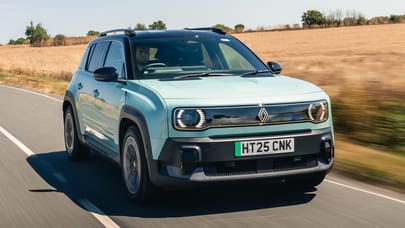
Every day a new high-voltage Peugeot. I'm confused.
Fair enough. Peugeot has just changed its brand slogan from 'Motion & Emotion' to 'Motion & e-Motion'. Be still my splitting sides. But actually there is substance behind it.
Peugeot has two different plug-in hybrid systems upcoming. We're testing the 508 as a prototype – it goes on sale late in 2019. It snuggles an electric motor next to its petrol engine, so it's FWD.
The 3008 crossover is different. It'll have that front hybrid setup, plus another electric motor aft, to become an actual 4WD.
Oh and as an Audi S4 rival they'll build the 508 Engineered by Peugeot Sport. That'll amp up the 4WD system to 350bhp.
Meanwhile we've also just seen the pure-electric 208. Still with us?
The PSA Group is reckoning that PHEV is right for bigger cars and pure-electric for smaller ones. And for the Peugeot brand, the electrified versions are the fastest in their ranges.
Green without the blues?
Don't you start with the rubbish slogans too. But yes. That's why the plug-in hybrid has Peugeot's familiar 1.6 turbo, rather than one of those super-economical but wheezy Atkinson-cycle engines deployed by the true hybrid believers. I asked a Peugeot engineer about that: "If you want efficiency, plug this in," she said. That's me told.
It means acceleration to 62mph in the mid-sevens, and a WLTP g/km CO2 figure that starts with a 4. But it's a prototype so we can't be exact yet.
Top Gear
Newsletter
Thank you for subscribing to our newsletter. Look out for your regular round-up of news, reviews and offers in your inbox.
Get all the latest news, reviews and exclusives, direct to your inbox.
Is it just a token plug-in effort?
Rather more than that. The critical EV range figure is 30 miles WLTP, from an 11.8kWh battery. So let's say perhaps 25 miles reliably, which to most commuters is well worth having. Plug in at home and work and you're good for 250 silent low-cost miles a week. Some of the early PHEVs could barely get their electric miles into double digits.
The electric 110bhp is enough power for most driving and can reach 81mph.
So how can I do what the engineer said, and charge it up?
It takes about two hours from an AC wallbox or street point with the usual Mennekes/type 2 connector. Rapid DC charging isn't provided for. The battery's not really big enough to justify it.
And the engine?
That's rated at 180bhp in this application, a bit short of the 225bhp it makes in the normal top-end 508. But total power in the hybrid is, by what is surely no coincidence, that same 225bhp figure. (You can't just add the engine power and the motor power because they each hit their peaks at different rpms.)
Both of them drive through the 8-speed autobox, with a clutch to separate the two for electric running. It feels as lively as the 225bhp suggests. The electric force helps cover for turbo lag, so when you hoof it the sensation is of a big petrol engine. Not like the Toyota-style manic rev-up. The engine dies when not needed but you seldom hear when it re-starts. This is a far more civilised car than a diesel.
But will it be economical in normal hybrid running?
I didn't get a long enough drive to get meaningful figures. But there are tweaks to help things along. Braking is the blended kind to get useful hybrid regeneration; they have work to do to make it feel natural but it's not bad. Anyway I was driving prototypes remember.
There's also a B-for-brake position on the transmission lever that pulls you back more when you lift-off, recharging the battery as it goes. The sensation is like shifting down on the over-run.
Because the battery lives under the rear seat, the fuel tank is squeezed down to 43 litres, so motorway stops will be more frequent.
My commute is motorway first then town. Won't the electric range be gone by the time I need it most?
The navigation takes care of that. It would program the system to use petrol for the motorway and switch to electricity at the right time so you arrive in clean silence with a near-flat battery.
Sounds like a lot of extra complication…
It is. But it's pretty uncomplicated to use. The motor, cabling and battery add weight too. About 250kg more, taking it to 1,670kg. But it's evenly distributed through the car, and the base 508 is pretty light. And anyway, the alternative big diesel is plus-110kg over the plain petrol version.
Price? Economy? When will we fill in some of the blank numbers?
The finished thing is out late this year. We'll let you know
Featured

Trending this week
- Car Review
BMW iX3






